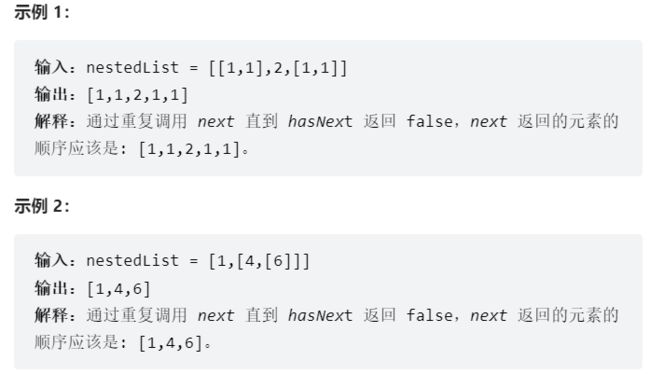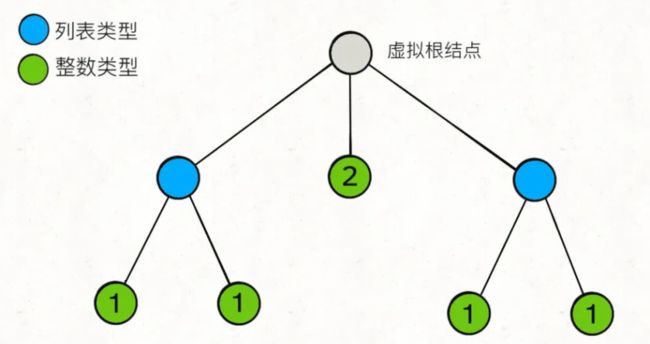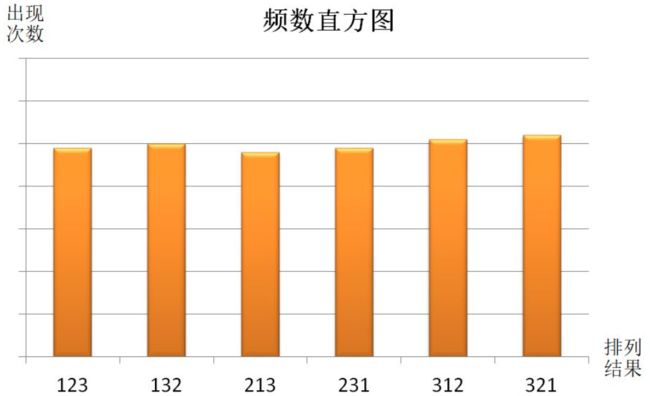LeetCode算法小抄-- N 叉树 和 洗牌算法
LeetCode算法小抄-- N 叉树 和 洗牌算法
-
- N 叉树
-
-
- [341. 扁平化嵌套列表迭代器](https://leetcode.cn/problems/flatten-nested-list-iterator/)
-
- 洗牌算法
-
- 蒙特卡罗方法验证正确性
⚠申明: 未经许可,禁止以任何形式转载,若要引用,请标注链接地址。 全文共计3605字,阅读大概需要3分钟
更多学习内容, 欢迎关注【文末】我的个人微信公众号:不懂开发的程序猿
个人网站:https://jerry-jy.co/
N 叉树
341. 扁平化嵌套列表迭代器
给你一个嵌套的整数列表 nestedList 。每个元素要么是一个整数,要么是一个列表;该列表的元素也可能是整数或者是其他列表。请你实现一个迭代器将其扁平化,使之能够遍历这个列表中的所有整数。
实现扁平迭代器类 NestedIterator :
NestedIterator(List用嵌套列表nestedList) nestedList初始化迭代器。int next()返回嵌套列表的下一个整数。boolean hasNext()如果仍然存在待迭代的整数,返回true;否则,返回false。
比如说输入是[[1,1],2,[1,1]],其实就是如下树状结构
把一个NestedInteger扁平化对吧?这就等价于遍历一棵 N 叉树的所有「叶子节点」?
/**
* // This is the interface that allows for creating nested lists.
* // You should not implement it, or speculate about its implementation
* public interface NestedInteger {
*
* // @return true if this NestedInteger holds a single integer, rather than a nested list.
* public boolean isInteger();
*
* // @return the single integer that this NestedInteger holds, if it holds a single integer
* // Return null if this NestedInteger holds a nested list
* public Integer getInteger();
*
* // @return the nested list that this NestedInteger holds, if it holds a nested list
* // Return empty list if this NestedInteger holds a single integer
* public List getList();
* }
*/
public class NestedIterator implements Iterator<Integer> {
private LinkedList<NestedInteger> list;
public NestedIterator(List<NestedInteger> nestedList) {
// 不直接用 nestedList 的引用,是因为不能确定它的底层实现
// 必须保证是 LinkedList,否则下面的 addFirst 会很低效
list = new LinkedList<>(nestedList);
}
@Override
public Integer next() {
// hasNext 方法保证了第一个元素一定是整数类型
return list.remove(0).getInteger();
}
@Override
public boolean hasNext() {
// 循环拆分列表元素,直到列表第一个元素是整数类型
while (!list.isEmpty() && !list.get(0).isInteger()) {
// 当列表开头第一个元素是列表类型时,进入循环
List<NestedInteger> first = list.remove(0).getList();
// 将第一个列表打平并按顺序添加到开头
for (int i = first.size() - 1; i >= 0; i--) {
list.addFirst(first.get(i));
}
}
return !list.isEmpty();
}
}
/**
* Your NestedIterator object will be instantiated and called as such:
* NestedIterator i = new NestedIterator(nestedList);
* while (i.hasNext()) v[f()] = i.next();
*/
洗牌算法
又被称为「随机乱置算法」
怎么能证明你的算法是「真的乱」呢?
-
什么叫做「真的乱」?
-
设计怎样的算法来打乱数组才能做到「真的乱」?
此类算法都是靠随机选取元素交换来获取随机性,直接看伪代码,该算法有 4 种形式,都是正确的:
// 得到一个在闭区间 [min, max] 内的随机整数
int randInt(int min, int max);
// 第一种写法
void shuffle(int[] arr) {
int n = arr.length();
/******** 区别只有这两行 ********/
for (int i = 0 ; i < n; i++) {
// 从 i 到最后随机选一个元素
int rand = randInt(i, n - 1);
/*************************/
swap(arr[i], arr[rand]);
}
}
// 第二种写法
for (int i = 0 ; i < n - 1; i++)
int rand = randInt(i, n - 1);
// 第三种写法
for (int i = n - 1 ; i >= 0; i--)
int rand = randInt(0, i);
// 第四种写法
for (int i = n - 1 ; i > 0; i--)
int rand = randInt(0, i);
洗牌算法正确性的准则:产生的结果必须有 n! 种可能,否则就是错误的。
蒙特卡罗方法验证正确性
洗牌算法,或者说随机乱置算法的正确性衡量标准是:对于每种可能的结果出现的概率必须相等,也就是说要足够随机。
第一种思路,我们把数组 arr 的所有排列组合都列举出来,做成一个直方图(假设 arr = {1,2,3})
每次进行洗牌算法后,就把得到的打乱结果对应的频数加一,重复进行 100 万次,如果每种结果出现的总次数差不多,那就说明每种结果出现的概率应该是相等的。
伪代码
void shuffle(int[] arr);
// 蒙特卡罗
int N = 1000000;
HashMap count; // 作为直方图
for (i = 0; i < N; i++) {
int[] arr = {1,2,3};
shuffle(arr);
// 此时 arr 已被打乱
count[arr] += 1;
}
for (int feq : count.values())
print(feq / N + " "); // 频率
arr 的全部排列有 n! 种(n 为 arr 的长度),如果 n 比较大,空间复杂度恒很高
第二种思路,可以这样想,arr 数组中全都是 0,只有一个 1。我们对 arr 进行 100 万次打乱,记录每个索引位置出现 1 的次数,如果每个索引出现 1 的次数差不多,也可以说明每种打乱结果的概率是相等的
void shuffle(int[] arr);
// 蒙特卡罗方法
int N = 1000000;
int[] arr = {1,0,0,0,0};
int[] count = new int[arr.length];
for (int i = 0; i < N; i++) {
shuffle(arr); // 打乱 arr
for (int j = 0; j < arr.length; j++)
if (arr[j] == 1) {
count[j]++;
break;
}
}
for (int feq : count)
print(feq / N + " "); // 频率
这种思路也是可行的,而且避免了阶乘级的空间复杂度,但是多了嵌套 for 循环,时间复杂度高一点
–end–



